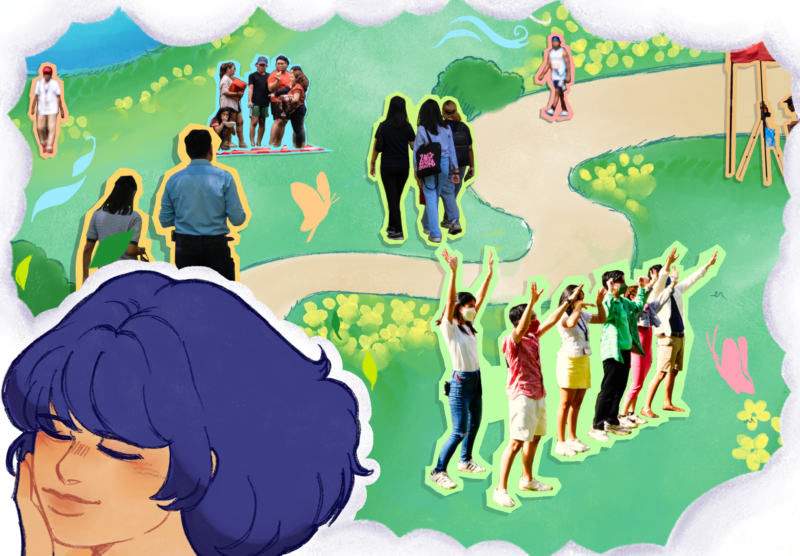With gender topics deemed as taboo as well as the number of conservative viewers posing as an obstacle, what future is there for the LGBTQ community in the realm of children’s media?
The nostalgic ballroom scene and the timeless soundtrack were enough reasons for Disney’s live action reboot Beauty and the Beast (2017) to generate hype the moment the film was announced. However, one particular piece of news made even more waves on social media: the reveal of Le Fou as Disney’s first gay character.
Inevitably, this was greeted with backlash from more conservative audiences, including those who were rooting for the movie before the Le Fou reveal. Most movies tend to get away with having LGBTQ (Lesbian, Gay, Bisexual, Transgender, Queer) characters, but Beauty and the Beast’s status as a children’s film became what conservative viewers saw as problematic. While LGBTQ media has always stirred conflict, the subject becomes even more controversial when situated in the realm of children’s media.
Moreover, while children’s media already has problematic history concerning the representation of LGBTQ, recent years show the need for more positive and accurate portrayals of these characters as this is what impressionable children are exposed to.
Kept in the closet
In the traditional nuclear family, boys are raised with the idea that “pink is for girls,” while girls are raised with the idea that “boys will be boys.” Such statements are not only oppressive, but also reinforce a heteronormative mindset where children are led to believe that gender is fixed and heterosexuality is the normal or preferred sexual orientation.
Raised in such an environment, most of these children are left with cartoons to teach them—through subtle displays— about the issues encountered within the LGBTQ community. Him’s gender-bending persona from the Cartoon Network show, The Powerpuff Girls (1998-2005), has led viewers to believe that the villain is transgender, a person whose sense of personal identity does not correspond with their birth sex.
The androgynous voice and appearance of the villain makes people wonder if Him is part of the LGBTQ. In an episode of the show, Buttercup dresses up as the villain by putting on rogue, wearing black lipstick, and adding a feather boa, which are all defining details of the transgender stereotype. This isn’t the first time that a villain has been depicted as part of the LGBTQ. In Disney’s The Little Mermaid (1989), Ursula’s look was actually based on the drag character, Divine, who was featured in various movies throughout the late 90s.
Though one can say that LGBTQ representation exists in cartoons, it is still debatable whether these representations are in fact accurate and adequate, since LGBTQ characters are often perceived as villains. LGBTQ representation in cartoon shows seem to be a hit or miss.
“There are particular places, that will just cut the scene completely, or ban [a] show or movie if there’s even just a hint of LGBTQ, so they really have to take that [into consideration],” shares Erika Tempongko, Promotions Executive of the Loyola Film Circle. In the Philippines, the Movie and Television Review and Classification Board is responsible for the classification, review, or if need be, censorship of television programs, movies, and home videos.
However, one can also commend certain shows like Cartoon Network’s Steven Universe (2013-present), featuring the characters Ruby and Sapphire, who are heavily implied to be a lesbian couple. “You can’t wait until kids have grown to let them know that queer people exist,” Steven Universe creator Rebecca Sugar stated in an interview with Movie Pilot. Sugar, one of the people behind such shows, thinks that the LGBTQ should be introduced to children earlier on through good representations in media.
Normalizing the narrative
Diverse representation of the LGBTQ community has evidently been improving in media. GLAAD (Gay & Straight Alliance Against Defamation) even reported the rise of LGBTQ characters in television today. “Now, it’s so much more diverse,” Tempongko agrees. “As we gained more knowledge about the community, [this] started to reflect in the media as well.”
However, while mainstream shows generate tons of support for the community, we shouldn’t overlook the more groundbreaking venture: the bringing of LGBTQ narratives onto children’s screens.
Just last year, Nickelodeon’s Loud House (2014-present) revealed that the protagonist’s parents were men, while Star vs. the Forces of Evil (2015-present) showed Disney’s first gay kiss. While some shows, like the aforementioned Steven Universe characters, have to avoid explicitly stating sexual orientations while instead heavily implying them throughout the series as a way to tiptoe around possible controversy.
The Legend of Korra (2012) went for this route as well. Korra and Asami, two of the main characters, were shown to be drawn closer to each other until the finale, where the last shot was of them holding hands and facing each other as they traveled into the spirit world together. Many viewers second-guessed the subtext of the scene, leading the show’s creators to confirm the two to be bisexual.
It’s hard to diversify media without causing conflict, but these titles have done something iconic. With shows like these, many children from the LGBTQ community are given a safe space and are able to see themselves in the light of a positive and normalized representation.
“I think it’s really important to have really good representation,” stresses Tempongko. “[It helps children know] that they’re not the only people who are feeling like outcasts—that they’re not the only people different from what mainstream society is telling you you’re supposed to be.”
The race to the rainbow flag
Still, there is a long battle to be won in the realm of kids’ cartoon and media. Back in 2014, Warner Bros. Pictures released a disclaimer on Tom and Jerry (1940) episodes that contained racist content through “blackfacing,” an old theatrical practice that entailed non-black actors assuming the role of a black character.
The entertainment company stated that “Tom and Jerry shorts may depict some ethnic and racial prejudices that were once commonplace in American society. Such depictions were wrong then and are wrong today.” With this, we can only hope that in the near future, the same acknowledgement and revolt against homophobic and gender-related violence will be done by entertainment firms.
But despite all the progressive portrayals of the LGBTQ community in children’s media and cartoons today, certain shows still have critics who see such subtle political statements in movies and shows as a marketing ploy. Most recently, this criticism was directed towards Beauty and the Beast, where the character Le Fou was seen as a problematic representation of a gay character.
However, English department lecturer Miguel Lizada says that subtle political statements with regards to the LGBTQ community “actually depend on what is being done to that narrative, which is why endings are very important.” Furthermore, Lizada says that filmmakers really have to consider the marketability and censorship of children’s movies or shows that feature LGBTQ characters. He says: “Whether we like it or not, queer characters sell,” and that “it is a compromise” not to focus on an LGBT character’s sexuality when it comes to kids’ media.
Beyond that, the presence of LGBTQ identities in children’s media, according to Lizada, is “ultimately a lesson on plurality: That there are more people out there than you meet in the playground.”
“There are different people, and not all of them live legitimate forms of lives,” he says. And in movies and shows such as Beauty and the Beast and Loud House, this plurality is certainly evident and is a nevertheless a start towards a more progressive and less discriminatory culture for future generations.







